Interview with Luciano Caggianello
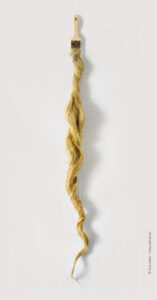 Can you tell us more about your early influences and what inspired you to pursue a career in art and design?
Can you tell us more about your early influences and what inspired you to pursue a career in art and design?
Probably the fascination for the “project” parameter, understood in the broadest sense of the term, which describes and specifies the structure of many creative and artistic sectors (architecture, graphics, illustration, drawing, painting… ) directed me and also involved me towards this path, so much so that by soliciting the dormant talent I subsequently wanted to try my hand at many of these activities, interpreting the profound characterization that permeates them. I think that the possibility of developing and creating an idea, a concept, an intuition, a project, starting from a blank sheet of paper, therefore a void, a nothing that did not exist, and being able to materialize it into “something” (design or artistic whatever was) tangible, visible, was the greatest stimulus to undertake and continue this path.
Perhaps, even if this is more of an impalpable suggestion, the “intellectual climate” of the Piedmontese capital has generated and induced an approach to the artistic perimeter and its related collaterals. The city of Turin has always been actively involved in the perimeters of social renewal and cultural innovation, contributing to the formation of a precise artistic conscience, which never wanted to be a substitute for what had preceded it but, in fact, over time it has gathered a The legacy is a respectful and very significant testimony. Many artistic-conceptual (but also scientific and engineering) proposals were, in fact, born and developed in the context of Turin’s intellectual growth (just to give a few examples, the engine, the decimal metric system, fractals, pathogenic human anatomy, Arte Povera…..) . Sometimes the reflection that separates a declination from its matrix remains small but nevertheless of elaborate support and therefore, even if there may never be tangible confirmation of this “theory”, I would like to think that some subliminal influence capable of contributing to this understanding.
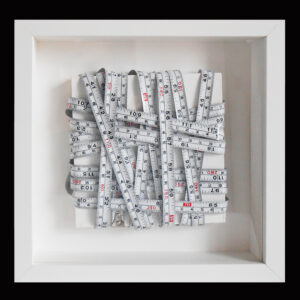 How did your experiences in advertising, illustration, and car design shape your approach to art?
How did your experiences in advertising, illustration, and car design shape your approach to art?
They were all important and significant experiences because from each one I gained skills and methodologies, albeit different. Probably, it was precisely this diversity that determined its added value as well as outlining a different path, especially in the methods of investigation and approach towards the art itself.
In fact, the aspect of dual professional intervention that I maintained as an illustrator, as an advertiser, as a designer and at the same time as an artist manifested itself in the form of a thin film that initially separated many conceptual considerations and interventions, but over time it was characterized as a osmotic opportunity that is not indifferent in the progression of artistic potential.
The approaches and expressive values that from the advertising environment, in an almost unconscious manner, have been transferred to that of design, have influenced the interactivity of the graphic module over the years, just as the materials and professional tools have also influenced the expressive possibility art and related creativity. In fact, the transition from the use of airbrushes, spray cans, collage, photography, to that of pantone, glossy paper, pencils, chalk, ribbons, up to the appearance of digital and three-dimensional mathematics, has also renewed the quality of chromatic taste and its relative cultural manifestation. The massive development of programs expressly dedicated to drawing and graphics (Photoshop, Adobe Illustrator, Corel Draw, Paint…), has allowed me, in addition to a different execution possibility, also a systematic variation of content.
I must thank my will, tenacity and consistency in wanting to learn expressive techniques of all types (… without wanting to incense myself too much, I managed to learn and experiment with all possible artistic and graphic techniques) as well as my profound inner curiosity which under the The intellectual aspect allowed me to delve into specific topics such as philosophy and history.
My artistic approach began through classical figuration and then changed over time by tackling different phases (realism, hyperrealism, modernist figuration, abstractionism, sign painting…) until arriving at a current broad conceptualism which, becoming the synthesis of multiple parameters, it allows me to think within a space of conspicuous and rational conceptuality. Within this perimeter, between reminiscence and pre-eminent contemporaneity, I turn to an intellectual suspension and an invention, sometimes even cloaked in a subtle irony, not inclined to repetition but still attentive to analysis, doubt, ideation and also to poetics, above all as a finalization of the potential for artistic concretization. In any case without forgetting the “culture” of thought which always represents the main objective.
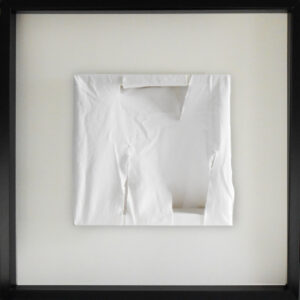
What motivated you to transition from traditional art forms to digital art?
There are no privileged reasons that diverted me towards this transition. It is probably just the spirit and path of the times, we could define it as the “technological mood”, which by designing new tools, which I immediately joined, led me to understand their potential but also to understand that they would not kill my creativity. This is in fact the mistake that many fall into because they believe that a different tool could undermine their approach or their talent. We must always remember that tools are and remain only tools, their functionality and consequent effectiveness depends exclusively on the user.
Obviously “technical” differences exist and digital, for example, certainly cannot restore the fullness or three-dimensionality of an oil painting, but this aspect should not be considered competition, it is just a detail for lovers of artistic schematisms or for those specialists in painting techniques. Personally, since my goal was, and still is, to present a concept, artistic manufacturing and its artisanal relevance has become secondary and therefore “expendable” compared to the primary intent of providing an “intellectual service” to those who look at the Opera.
It often happens that I have to face this debate, especially with some technical and technological fanatics, because according to their point of view this new approach would represent a serious limitation. I, however, believe that it is just a fake in-depth analysis and a useless discussion that fascinates some specialists or nostalgics in the sector. It would be like talking about the difference that exists between a rear-wheel drive car and a front-wheel drive car with the relative advantages and disadvantages or delving deeper into the topic of photography through the analysis of a reflex camera with the classic film roll or with the aid of digital. Discussions, I believe, suited only to historians or the supposed “perfectionists” of both fields.
In fact, sometimes it seems that technology, in some areas, is not wanted to be introduced because otherwise the temporal charm or specificity of that ancient project would be lost. Personally I believe that the future will inexorably give us even further and varied ways of representing and enjoying art.
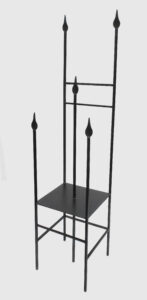 How do you decide on the themes and visual elements for your works, such as the use of text and geometric forms?
How do you decide on the themes and visual elements for your works, such as the use of text and geometric forms?
Regarding the themes, I can say that I often don’t decide them but they clearly emerge following the flow of everyday life that offers infinite food for thought. My mind has become accustomed to receiving stimuli in the most disparate contexts, my ideal environment is the one close to perimeters of metamorphosis, stories, alternative visions, but also errors as well as a concrete existential phenomenology.
Instead, the use of visual elements, be they text, geometric shapes or other, is first substantiated through the conceptual elaboration of my intuitions. I subsequently develop this material, adapting it to a specific medium, in order to be able to direct it towards a definitive argument and visual specificity. Being able to use digital, sculpture, installation, painting (in all its forms), graphics or illustration, I interpret the work by thinking of the support that is better than others able to synthesize, interpret and enhance it. And obviously I always arrive at a synthesis that can incorporate the perspective suitable for achieving a complete conceptual meaning but at the same time presents itself and is arranged in an aesthetic way.
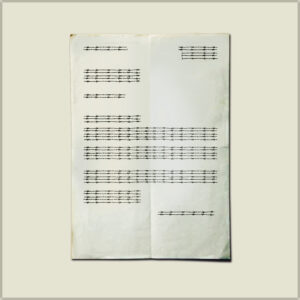 Your work “The Words of the Wicked” has a unique composition. What was the conceptual idea behind this piece?
Your work “The Words of the Wicked” has a unique composition. What was the conceptual idea behind this piece?
This work was born last year from a specific exhibition request. My reference gallery (the O.A.H Gallery – Open Art House Gallery in Ivrea) had planned the staging of an exhibition (Otto and the Shoah of Art) in the Gardens of the Venice Biennale (from 28 October to 19 November 2023) inherent to the Shoah and the so-called Degenerate Art (Entartete Kunst) whose name comes from the definition formulated by the Nazi regime itself. In fact, that authoritarian government persecuted not only Jewish artists but also those who strenuously opposed the establishment of that dictatorship and the exhibition was intended to be the reminiscence of a historical journey with the aim of highlighting and bringing back to mind that precise and dark temporal window.
Despite being an iconographic and documentary exhibition, the gallery owner (Monica Cremaschi) wanting to also introduce some contemporary works into the exhibition, in order to create a sense of temporal and thematic parallelism, asked me to create some works that adapted to this specific and demanding thematic. Therefore I developed a series of works, including the one mentioned, thinking and immersing myself in that specific historical context which, although belonging to the sedimentation of our human past, contributes, through a transversal contemporaneity, to making it an active and perennial memory.
The work is therefore placed in a perspective angle of visual and conceptual re-modelling and since the use of words would probably have become incomprehensible but above all superfluous, those words were replaced by pieces of barbed wire. I wanted stylistic rigor to transcend stage fiction and become capable of embracing an unreal and psychological dimension suitable for staying in a room of our unconscious and could therefore permeate that hardened indifference that often dwells in each of us. I would like that, even now and always, those who watch the work remain shaken by that brutality, that horror, that monstrosity perpetrated, to the point not only of attempting a binding identification but at least removing the temptation or the attempt to justify those infamous and unworthy for any human being.
You’ve exhibited both nationally and internationally. Have you noticed any differences in how audiences from various parts of the world respond to your work?
In fact, the opportunity to exhibit internationally in many countries around the world led me to some personal reflections. Obviously I will not expose the list of countries or galleries in which my artistic research has landed with less or greater interest and success both because it would not be a kind act and because I believe that within a community, however large it may be, not all its members are directed or standardized towards the same tastes or tendencies.
However, through these investigations of mine, deriving from a significant number of exhibitions, I have formulated a concept that I can summarize through a sort of quote: “He who cannot convince, tries to amaze”. In fact, I have discovered that a fair number of people are influenced by figurative art, especially if it is very realistic and based on the replication of models, objects or places (or in any case not aimed at a specific or single objective) because through this method it prevails, in predominant way, the skill of the performer and the user often wonders how he was able to achieve that particular detail in such an impeccable manner. It is not by chance that I use the term executor because often by analyzing this approach one discovers minimal ingenuity, little creativity and only the obvious technical ability in executing and putting together a painting. I state this aware that I may antagonize the judgment of some art lover or some artist who works with this technique but I say this without controversy or acrimony because I myself have made similar works. But it was the beginning of his career and it was just a way to learn the technique and then finally overcome it.
Therefore, having analyzed these and the other many nuances in accepting my conceptual works, I orient myself according to this predisposition, starting from the assumption and profound awareness that one cannot be liked or acclaimed by everyone. It is the key principle of an artistic democracy and of the very protection of individual expressiveness that must exist and be protected.
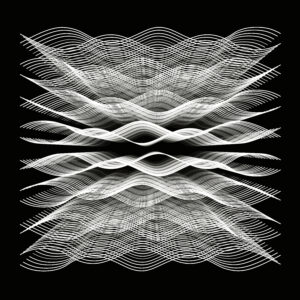
Do you have any upcoming projects or exhibitions that you are particularly excited about?
There are objectives, drafts and contacts for future programs but I am always reluctant to talk about them in advance (but not out of superstition, just for confidentiality), and therefore I wait for them to be adequately consolidated.
Instead, to provide a more “metaphysical” answer, I want to say that, regardless of the exhibitions, the acclaim, the appreciation and even the feedback, my research moves within a satisfying internal conceptual perspective, albeit in a territory of the possible , of the uncertain and perhaps even with imprecise and contestable references. This is the understanding I stick to because I understand that glory, fame, notoriety can be determined through wandering, sometimes doubtful or cyclical trends, whereas the will, the determination of one’s work has a decidedly more constant trend and is less inclined to ‘irresolution.
Pursuing an artist’s viaticum means obeying only a force of ethical conscience, an inexplicable atmosphere of introjective curiosity. There are no friezes, medals, recognitions, adverbs, friendly tautologies that can replace or exchange a precise suspension and creative propensity. And throughout this perimeter, narcissism, which is instead the new “ethical adaptation” of our contemporaneity, should be banned. As far as I’m concerned, this attribution does not unite me, it does not belong to me and does not represent me. This is certainly the project that identifies me and that I intend to pursue this year as well as the next.
If you could give one piece of advice to aspiring artists, what would it be?
As an existential philosophy, I believe that giving advice (both practical and theoretical) is almost always useless or at least inappropriate as everyone lives their own experiences, even making mistakes, and then tries to draw the best clues from them.
However, considering that the question is a sort of remotely possible hypothesis, I can say, briefly, that since our unexpected existence turns out to be as bizarre as it is imponderable, the only “antidote” to such everyday life is embodied in the ability to psychologically prepare ourselves for live through the adoption of a profound resilience but above all by approaching a greater existential complementarity.
However, for those who want to undertake paths of profound rationality by assimilating techniques and storing infinite explorer manuals, it can be said that such vacuous and inertial teaching must always be taken in small doses.

Leave a Reply